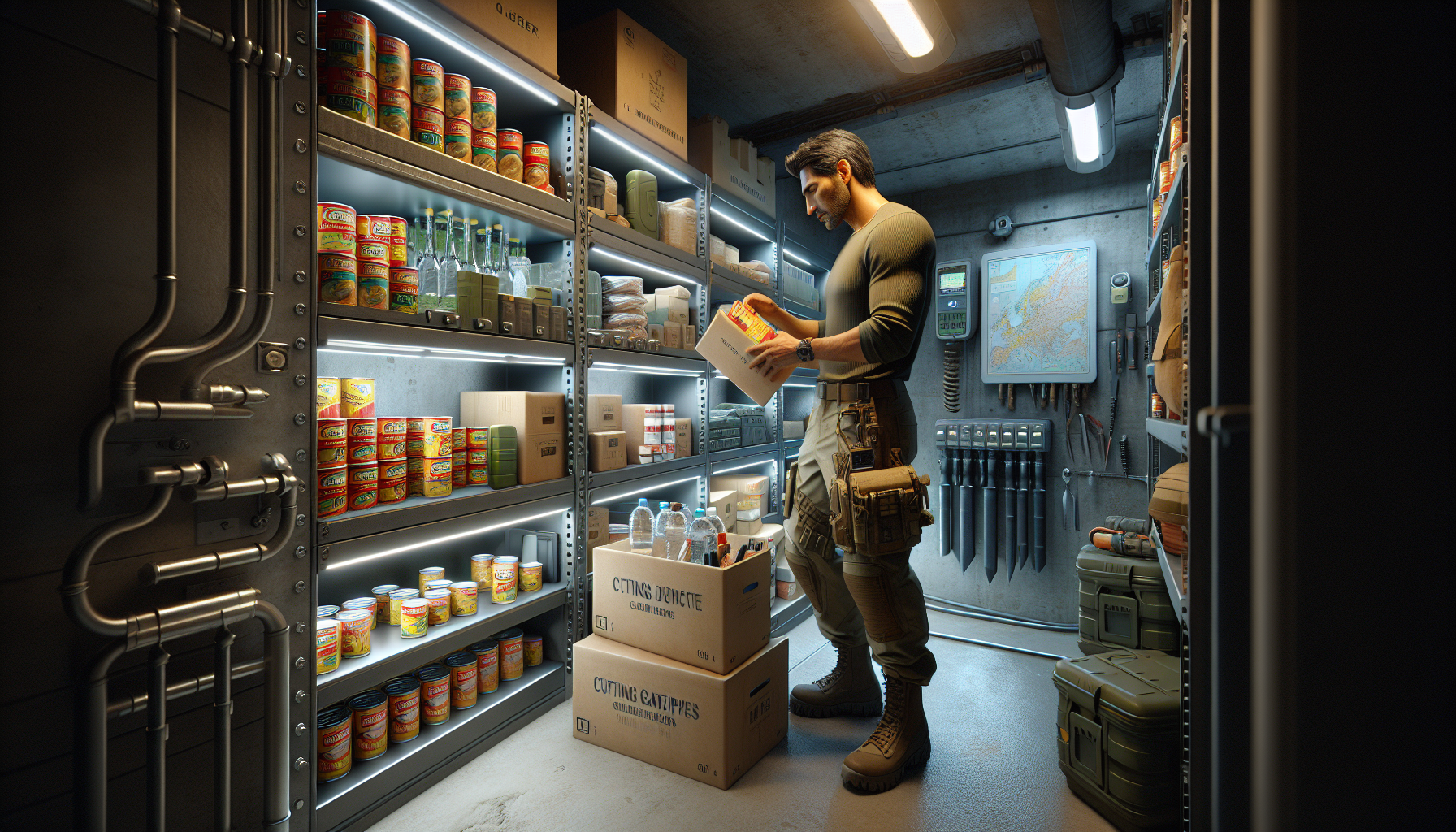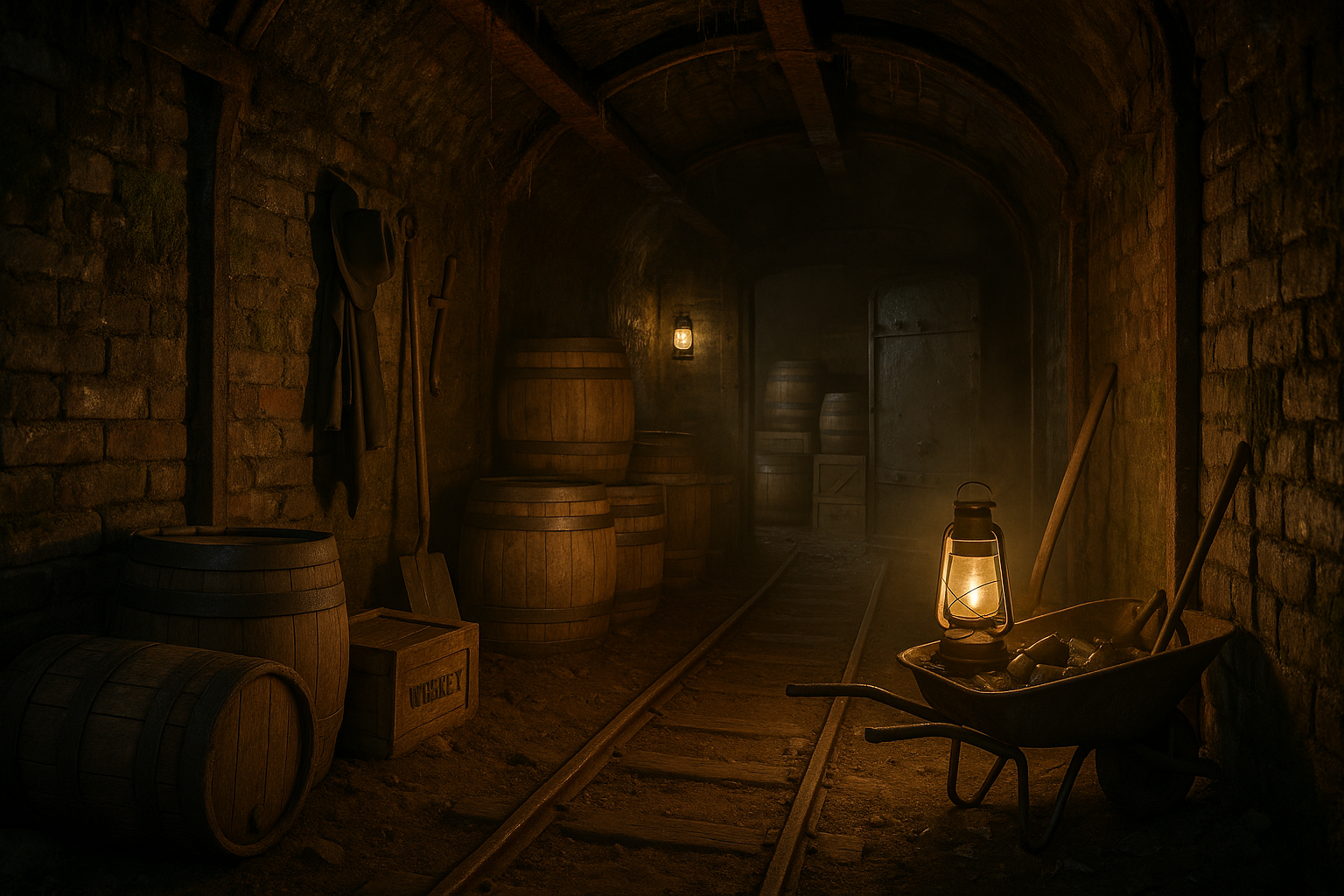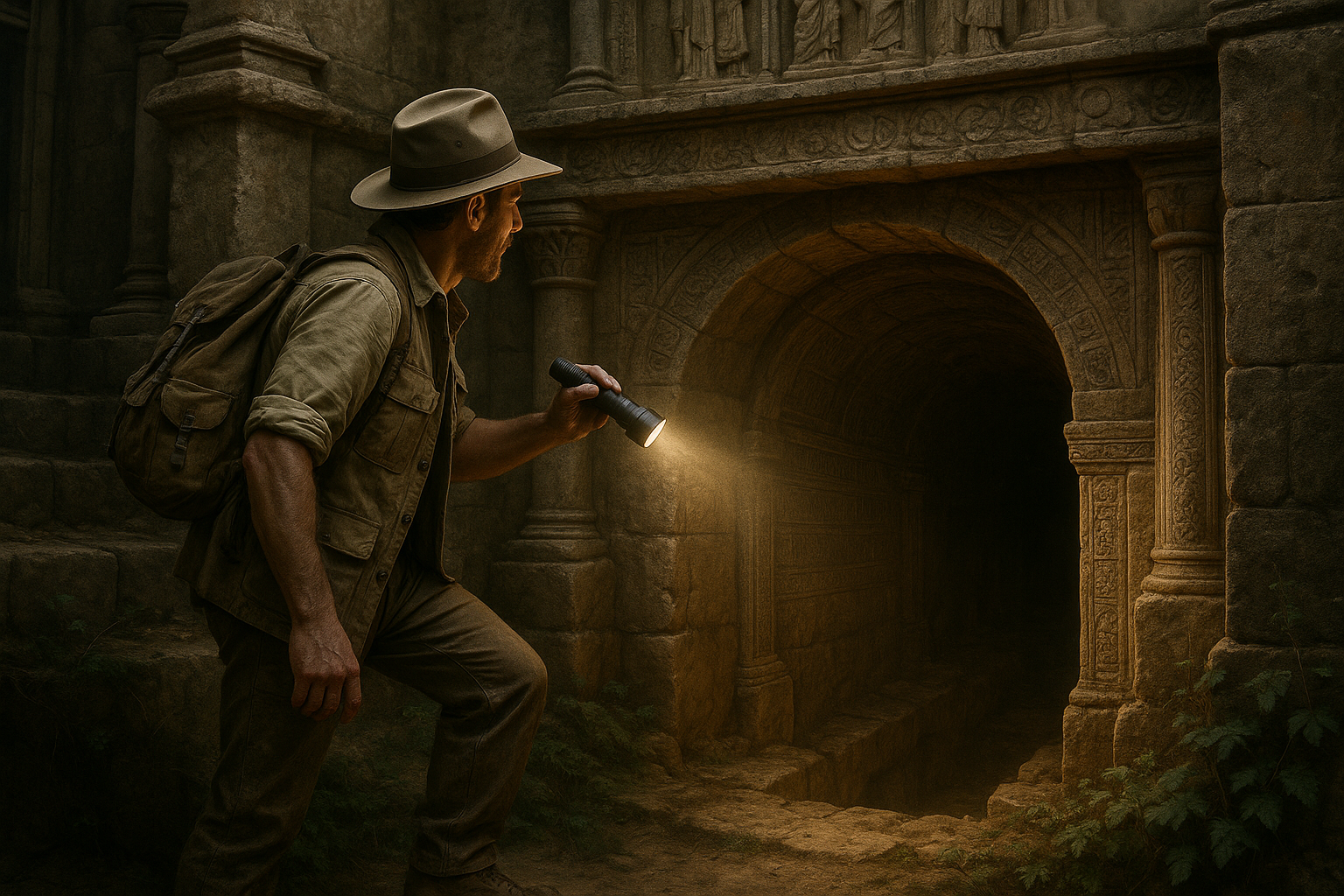In an era where uncertainty seems to be the only constant, the idea of seeking refuge underground has transformed from a distant dystopian fantasy into a palpable reality for many. As the world above grapples with environmental crises, geopolitical tensions, and unforeseen disasters, the concept of survival has taken on a new depth—literally. Welcome to the intriguing realm of bunkers, where mastering the art of underground survival is not just a necessity but an empowering journey toward self-reliance and resilience.
Imagine a place where the chaos of the world fades away, and you find solace in a fortified sanctuary. Bunkers, once synonymous with wartime refuge, have evolved into sophisticated, self-sustaining habitats that promise safety and peace of mind in the face of adversity. Whether you’re an enthusiast intrigued by the engineering marvels beneath our feet or someone genuinely preparing for potential calamities, understanding the fundamentals of bunker life is more relevant than ever. In this comprehensive guide, we will delve into the essential aspects of living underground, blending practicality with innovation to ensure you not only survive but thrive.
Our exploration begins with the core tenets of bunker construction and design. From selecting the ideal location to understanding the nuances of structural integrity, we will guide you through the critical decisions that lay the groundwork for your subterranean sanctuary. How do you ensure adequate ventilation without compromising safety? What materials offer the best protection against external threats while maintaining comfort? These questions form the cornerstone of our discussion, setting the stage for a deeper dive into the intricate balance between security and livability.
As we journey further into the heart of the bunker, the focus shifts to the lifelines that sustain us: food, water, and power. In a world where resources are finite, mastering the art of self-sufficiency becomes paramount. We’ll explore innovative solutions for food storage and production, the latest advancements in water purification technology, and sustainable energy sources that keep the lights on when the world outside goes dark. These elements are not just survival tactics but a blueprint for a lifestyle that harmonizes with the environment even from below ground.
Finally, no exploration of underground living would be complete without addressing the psychological and social dynamics of life in confinement. How do we maintain mental well-being in isolated environments? What role does community play in a world where human connection is both a comfort and a necessity? By weaving together insights from psychology and sociology, we will illuminate the paths to cultivating resilience and fostering a sense of belonging, even when separated from the world above.
Prepare to embark on a captivating journey through the depths of the earth, where the principles of survival meet the spirit of innovation. “Bunker Basics: Mastering Survival in the Underground” is not just a guide but a gateway to a future where safety and sustainability coexist. Whether you’re preparing for the unknown or simply curious about the life that thrives beneath our feet, this article will equip you with the knowledge and inspiration to embrace the challenges and opportunities of underground living. 🛡️🌱
Understanding the Concept of Bunkers: A Historical Perspective
The concept of bunkers has a long and varied history, stretching back to times when humans first sought shelter from the elements and threats. Initially, these structures were simple, offering basic protection against weather and wildlife. However, as threats evolved, so did the design and purpose of bunkers. From medieval fortifications to modern underground havens, the journey of bunkers is a fascinating reflection of human ingenuity and survival instincts.
During World War I and II, bunkers became synonymous with military strategy. Nations built extensive networks of underground shelters to protect troops and civilians from aerial bombings. These bunkers were equipped with basic amenities and were often connected by tunnels, allowing for movement and communication. Post-war, the Cold War era saw a shift in bunker purpose, as the threat of nuclear war loomed. Governments and private citizens alike invested in underground shelters, designed to withstand blasts and radiation.
In today’s context, bunkers have taken on a new significance. With growing concerns about natural disasters, pandemics, and geopolitical tensions, individuals are revisiting the idea of having a personal bunker. The modern bunker is no longer a cold, dark place; it’s a sophisticated, self-sufficient living space designed for comfort and long-term habitation. Understanding this evolution helps us appreciate the role of bunkers in contemporary survival strategies.
Essential Components of a Modern Survival Bunker
Building a modern survival bunker requires careful planning and understanding of essential components that ensure safety, comfort, and sustainability. At the heart of every functional bunker is a robust infrastructure, capable of supporting life for extended periods. This includes advanced ventilation systems to provide fresh air, water purification systems, and waste management solutions. A well-designed bunker prioritizes these systems to maintain a healthy living environment.
In addition to infrastructure, modern bunkers are equipped with renewable energy sources such as solar panels and wind turbines. These not only reduce reliance on external power grids but also enhance the bunker’s sustainability. Another critical component is food storage. Efficient bunkers include long-term food storage solutions, such as freeze-dried meals and canned goods, alongside hydroponic or aquaponic systems for growing fresh produce. This ensures a balanced diet even in extended isolation.
Moreover, communication and security are paramount in a survival bunker. Satellite phones, radios, and internet connectivity help maintain contact with the outside world, while advanced security systems protect against intruders. These features, when integrated effectively, transform a bunker from a mere shelter into a fully functional underground home, capable of sustaining life during emergencies.
Key Features to Consider
- Ventilation and Air Filtration Systems
- Water Purification and Waste Management
- Renewable Energy Sources
- Long-term Food Storage Solutions
- Communication and Security Systems
The Psychological Aspect of Living in a Bunker
While the physical aspects of bunker living are often emphasized, the psychological challenges cannot be overlooked. Living underground, potentially for extended periods, poses unique mental health challenges. The absence of natural light, restricted movement, and isolation can lead to anxiety, depression, and cabin fever. Therefore, designing a bunker should consider not only survival but also mental well-being.
Incorporating natural elements, such as simulated sunlight through LED panels and plant life, can significantly improve the psychological atmosphere. Designated spaces for exercise and entertainment, like a small gym or a multimedia room, help maintain physical and mental health. Regular interaction with the outside world through digital means can also alleviate feelings of isolation.
Moreover, establishing a routine and having a variety of activities to engage in can provide structure and purpose. Psychological preparedness is as vital as physical readiness in a bunker. Preparing mentally for the transition to bunker life can help mitigate the shock and stress, ensuring a balanced approach to long-term survival.
The Economics of Building and Maintaining a Bunker
The financial aspect of building and maintaining a survival bunker is significant. Costs can vary widely depending on the size, location, and features of the bunker. Basic bunkers may cost tens of thousands of dollars, while more elaborate designs with advanced technologies can run into millions. Understanding these costs and planning accordingly is crucial for anyone considering investing in a bunker.
Initial construction costs include excavation, structural reinforcement, and installation of essential systems. Ongoing maintenance is another consideration, as systems like ventilation, water purification, and power sources require regular checks and updates. Food supplies must also be replenished periodically to ensure they remain viable. Financial planning for a bunker should also account for these recurring expenses.
For those interested in building a bunker, exploring financial options such as loans or partnerships can make the project more feasible. Additionally, insurance for the bunker and its contents is an important consideration to protect the investment. Balancing cost with functionality is key to creating a sustainable and effective underground living space.
Cost Breakdown Example
| Component | Estimated Cost |
|---|---|
| Excavation and Construction | $50,000 – $100,000 |
| Ventilation and Air Systems | $10,000 – $30,000 |
| Water and Waste Systems | $15,000 – $25,000 |
| Renewable Energy Setup | $20,000 – $50,000 |
| Food Storage and Production | $5,000 – $15,000 |
| Security and Communication | $5,000 – $20,000 |
Case Studies: Successful Bunker Projects
Examining successful bunker projects can provide valuable insights into best practices and potential pitfalls. One notable example is the Silo Home in New York, which transformed a decommissioned missile silo into a luxurious underground residence. This project highlights the potential for converting existing structures into functional bunkers, saving on excavation costs and utilizing durable Cold War-era materials.
Another example is the Vivos Group in South Dakota, which developed a community of bunkers designed for extended living. These bunkers offer a communal approach to survival, with shared resources and spaces. This model promotes a sense of community and shared responsibility, addressing some of the psychological challenges associated with isolation.
Each of these projects illustrates different approaches to bunker living, from luxury retreats to community-oriented shelters. Studying these examples can inspire new ideas and solutions for those considering building their own survival bunkers.
Recommended Video
To dive deeper into bunker design and living, check out this insightful video on YouTube: “Inside a Luxury Doomsday Bunker” by The Richest. 🎥

Conclusion
Conclusion: Mastering the Underground: A Journey into Bunker Basics
As we draw this exploration of underground survival to a close, it’s essential to reflect on the multifaceted journey we’ve embarked upon together. In delving into the world of bunkers and survival strategies, we have traversed through a landscape that, while seemingly distant, has profound implications for our contemporary lives. Our discussions have been framed around the necessity of preparedness, the intricacies of bunker design, psychological resilience, and the broader social and environmental contexts that underscore the relevance of these survival strategies.
One of the core aspects we explored was the architectural and engineering marvels that bunkers represent. From understanding ventilation systems to ensuring a sustainable supply of food and water, we have covered the critical infrastructural elements that transform an underground shelter into a life-sustaining environment. The technical insights provided not only highlight the complexity of building a functional bunker but also underscore the importance of precision and planning. For those interested in further research or practical application, resources such as the FEMA guidelines on shelter construction (FEMA.gov) offer valuable information that can help refine these plans.
Moreover, our exploration into the psychological dynamics of living in confined spaces highlighted the crucial need for mental resilience. Surviving underground is not merely a physical challenge but a mental one as well. Strategies for maintaining morale, fostering community, and ensuring psychological well-being are as vital as any physical preparation. This dual focus on both body and mind ensures a holistic approach to survival that can be applied beyond the confines of a bunker, serving as a metaphor for resilience in daily life.
The broader societal implications of bunker survival also warrant attention. In a world where environmental concerns and geopolitical tensions are increasingly at the forefront, the concept of bunkers transcends its historical Cold War connotations to become a relevant consideration for modern-day preparedness. Whether it’s addressing natural disasters or potential conflicts, the strategies discussed in this article equip individuals with the knowledge to face uncertainties with confidence. For those keen on exploring the intersection of environmental science and survival, the Environmental Protection Agency (EPA.gov) offers extensive resources on sustainable practices and emergency preparedness.
Importantly, this journey has been about more than just surviving; it has been about thriving under challenging conditions. The skills and knowledge gained from understanding bunker basics are applicable in various facets of life, encouraging a mindset of preparedness, adaptability, and innovation. By adopting these principles, individuals can cultivate a sense of empowerment that extends beyond the prospect of living underground.
As we conclude, it’s vital to acknowledge that the insights shared in this article are just the beginning. The field of survival science is ever-evolving, driven by advancements in technology and shifts in global dynamics. Engaging with communities, participating in workshops, and staying informed through credible sources are ways to continue this journey. Websites like Ready.gov provide ongoing updates and resources for those committed to expanding their knowledge and preparedness.
We invite you, our readers, to reflect on the themes discussed and consider how they might apply to your own lives. Whether you find yourself inspired to build a bunker, enhance your emergency preparedness, or simply adopt a more resilient mindset, the lessons from “Bunker Basics: Mastering Survival in the Underground” are universally applicable. Share your thoughts, experiences, and insights with us in the comments section below or on social media. Your perspectives enrich the dialogue and foster a community of like-minded individuals passionate about mastering survival.
As we part ways, let us embrace the wisdom of preparedness and the spirit of resilience. In doing so, we not only prepare for potential adversities but also enhance our ability to thrive in an ever-changing world. Remember, the true essence of survival is not just about enduring but about emerging stronger, wiser, and more connected to the world around us. 🌍💪
Thank you for joining us on this enlightening journey. May your path be ever-prepared and your spirits ever-resilient.
Toni Santos is a visual storyteller and artisan whose work explores the quiet power of what lies beneath. With a deep fascination for subterranean and hidden architecture, Toni uncovers the layers, voids, and forgotten spaces that shape our built environment from the shadows.
His art is a journey through the unseen — from ancient underground chambers to sealed passageways, service tunnels, and foundations buried in time. Each creation tells a story of silence, secrecy, and structure — revealing how absence and concealment can be just as meaningful as what’s visible above ground.
Whether working through visual compositions, architectural studies, or symbolic handcrafted pieces, Toni captures the soul of hidden spaces. His work bridges art and archaeology, blending design with discovery. Trained in visual design and traditional techniques, Toni creates with intention. His pieces don’t just depict — they interpret, inviting viewers to rethink what space, memory, and architecture mean when they’re hidden from view.
As the creative force behind Vizevex, Toni shares this perspective through curated visual narratives, symbolic collections, and interpretive essays that give voice to the quiet geometries beneath our feet.
His work is a tribute to:
The mystery of spaces built to be forgotten
The symbolism embedded in foundations, voids, and passageways
The timeless connection between human intention and hidden structure
Whether you’re an artist, an urban explorer, or someone fascinated by the unseen frameworks that support our world, Toni invites you into a realm where architecture becomes myth — one corridor, one layer, one buried story at a time.





